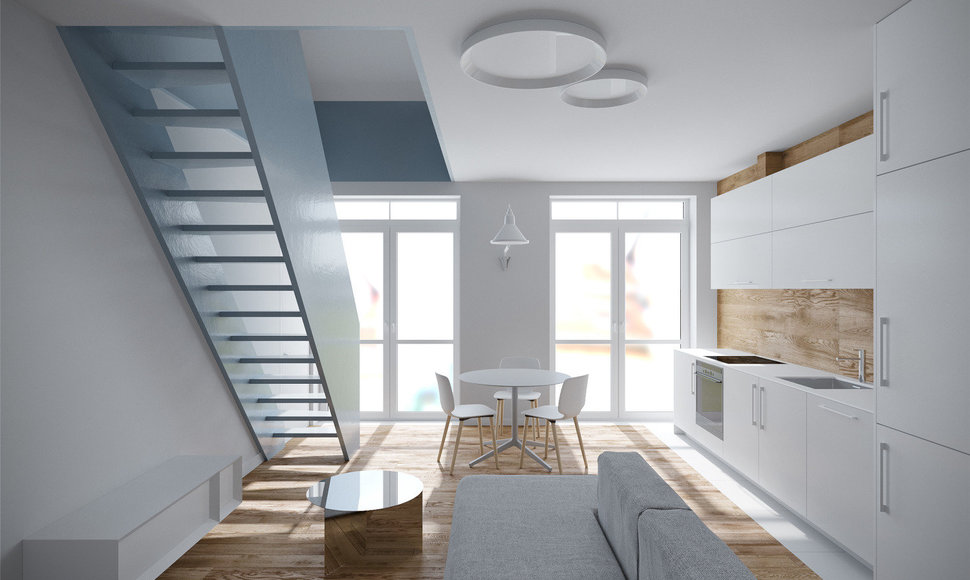“Excess of décor elements, which for a very long time has been associated with luxury, is being replaced by the need to have more space. This is typical of countries with fast-growing economies and societies which follow the current trends. Light and comfort are becoming increasingly important with furniture and other objects being chosen for their functionality,” explains Mantas Umbrasas, Director of Property Management at Darnu Group.
Sabina Daugėlienė - the General Manager of Do Architects, an architecture and urban design studio in Vilnius – says that in the past homes were decorated very similarly to each other due to the lack of choice in furniture and finishing materials. But the situation has changed over the last three decades – the Lithuanian market of interior design has expanded and can now offer a wide variety of options.
“Very often people used to overdo it when choosing and combining different finishes, decorating was excessive. Whereas now homeowners tend to go for sustainable, natural materials which age beautifully. Quality of objects is being prioritised over quantity and we notice that art is becoming an important decorative element too,” says the architect.
Need for harmony
According to Daugėlienė, Lithuanians are particularly conscious of light, functionality and simplicity when making decisions on interior design. This is why the minimalist, classic and Scandi styles are so popular – they all create a sense of harmony and answer the homeowner’s need for light and natural materials.
“Functionality is at the centre of the minimalist style. Its simplicity and very few decorative elements mean that the quality of each material, each piece of furniture or an accessory is particularly important. The Scandinavian style is slightly less restricted, characterised by the use of natural finishes such as wood, natural fabrics as well as the abundance of light. The classic interiors are probably the trickiest to describe. The term usually applies to any style displaying the decorative elements of a particular historical period, as well as antique furniture or its replicas,” explains Daugėlienė.
Foreign trends
The need for light and harmony is also confirmed by the results of the survey. More than two-thirds of the respondents – 62 per cent – would choose light hues when decorating their home. Pastel shades would be the go-to option for 33 per cent of the Lithuanian homeowners with white being mentioned as the prevalent colour in 63 per cent of responses.
Daugėlienė believes this affinity to white is down to it being so neutral. People don’t get bored with this colour, it bounces the light off very well and creates a sense of space while highlighting other design elements such as works of art, photos or furniture.
“Today Lithuanians are mostly influenced by the interior design trends coming from the Western countries. In addition, books, travels and interest in other cultures around the world make our interior design choices more diverse too,” says the architect.
Some of the other popular colour choices highlighted by the survey include yellow (38 per cent of respondents), green (31 per cent), brown and blue (23 per cent each) as well as red (18 per cent).
White and its various shades would be the dominant colour in the interior design choices of highly-educated, city-dwelling women who are also the biggest earners. Men would prefer the colour palettes of black, blue and green. Black, blue as well as red are also favoured by the respondents within the age bracket of 18 to 25.
The opinion survey of the residents of Lithuania was conducted by Spinter Research with the aim to establish the views on choosing the perfect home and fitting it out. 1014 respondents took part in the survey.
The people surveyed were between 18 and 75 years old, 61 per cent of those were in the age group of 26-55. 46 per cent of respondents were the residents of larger cities, 26 per cent came from smaller towns/regional centres and 28 per cent – from rural locations.
Translated from Lithuanian by Audronė Kvietkutė












